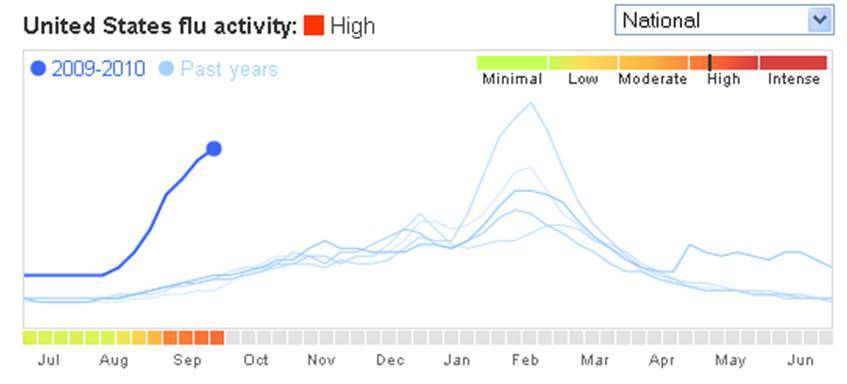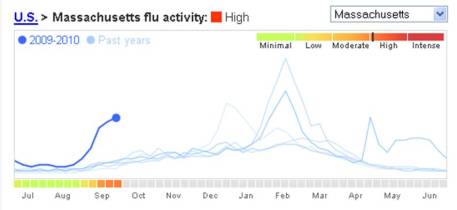Google’s experiment in trending flu outbreaks is absolutely – and I mean absolutely – amazing. I bet that any professional epidemiologist would cringe at the idea of using non-clinical data to identify disease trends, but this application boggles my mind.
Here’s how it works. Google meters its search queries on flu-related topics, figuring that the more that people search on a flu topic, the more likely the flu is occurring in real life. It does not measure anything clinical – nothing about positive throat cultures, visits to emergency departments, or any other traditional sentinel reporting measures. Just search queries.
The demo on Google’s own website shows how, using data from the 2007-2008 flu season, it can identify flu trends two weeks ahead of anyone else, including the CDC. The data for this current season – the first full season with the H1N1 virus – confirm that many people are getting sick with the flu already, months before the traditional height of the flu season.
Here’s the data about the U.S., as of Sept. 29:


State-specific data can be filtered, too.

This is a new kind of sentinel reporting for infectious disease.
If you consider that Diggs and other user voting systems, sharing content, and even search queries are all forms of user-generated content, then this is social media in its most pragmatic form, producing a product that can be really valuable.
This can be replicated for any other social phenomenon – in health care or anywhere else. What else could we measure?